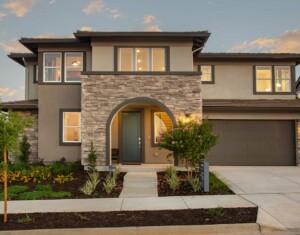Glen Loma must assure fire station construction, city attorney says
Letter accuses developer of reneging on promise
![]()
By Marty Cheek
 Tensions flared between the city of Gilroy and Glen-Loma Group over the terms of a 2005 agreement granting the prominent local developer the right to build out Gilroy’s largest residential community in the western district of the city.
Tensions flared between the city of Gilroy and Glen-Loma Group over the terms of a 2005 agreement granting the prominent local developer the right to build out Gilroy’s largest residential community in the western district of the city.
In a strongly-worded Nov. 20 letter from Andrew L. Faber of the law firm Berliner Cohan, Gilroy’s City Attorney accused Glen-Loma of reneging on its promise under the development pact to construct and donate a new fire station, a claim the developer disputes.
The purpose of the letter is to give a formal notice that the city disputes Glen-Loma’s recent position that it is not obligated to build and dedicate a fire station to the city if it does not end up building 1,100 residential units.
The clash underscores mounting friction as the developer signals intentions to scale back the scope of its original plans for Glen Loma Ranch while still retaining development allowances it secured 18 years ago.
John Filice, president of Glen-Loma Group, sent Gilroy Life an email reply in response to the letter: “Glen Loma is in full compliance with each and every provision of the Development Agreement and continues to be ready, willing, and able to meet all of its obligations.”
The city attorney’s letter states that under the 2005 Development Agreement, Glen Loma received substantial benefits including vested development rights, while agreeing to construct and dedicate certain public improvements including two parks and a fire station. The fire station provision contains an outside timing condition. It must be dedicated prior to the 1,100th residential permit. The letter said this does not negate Glen Loma’s underlying promise to build and dedicate the station.
The letter demands Glen Loma provide assurance within 30 days that it will proceed to construct the fire station as agreed, or risk legal action.
“We will regard a failure to provide such assurance as constituting a potential default under the Development Agreement, in which case the city will then be free to avail itself of any remedies available at law or equity under the Development Agreement,” it stated.
 The Gilroy City Council approved a proposed design for the fire station at the Dec. 2, 2019, meeting. It directed the city administrator to notify Glen Loma Corporation to begin construction.
The Gilroy City Council approved a proposed design for the fire station at the Dec. 2, 2019, meeting. It directed the city administrator to notify Glen Loma Corporation to begin construction.
City Administrator Gabe Gonzalez sent the company a Jan. 27, 2020 letter as “a formal notification by the City of Gilroy for the Glen Loma Ranch fire station construction notice to proceed.”
In Faber’s letter last month, it notes Glen Loma representatives recently told City Administrator Jimmy Forbis, including at a meeting on Sept. 25, 2023, that if the developer holds a position where it does not seek as many as 1,100 residential building permits, then it will not be obliged to build and dedicate the Sunrise fire station to the city as required by Section 4.4.1.2 of the Development Agreement.
“This is not a position Glen Loma had ever taken until very recently,” Faber said in the letter. “It has always been the understanding by both Parties that the fire station would be built by the Developer. It could be built at any time, but in any event had to be completed no later than the issuance of the building permit for the 1,100th residential unit.”
Glen Loma has expressed a possible downsizing of the project, according to the Faber letter. The developer suggested if it does not seek a building permit for as many as 1,100 residential units, it would not be legally required to build a fire station on the property.
According to the letter:
“While the city has not received a formal statement of this position from you, this letter is to put you on notice the city strongly disagrees with that position and would interpret it as an anticipatory repudiation of the developer’s obligations under the agreement. Legally speaking, it is clear Section 4.4.1.2 expresses a promise on the part of the developer to build and dedicate the fire station. The reference to the building permit for the 1,000th (or 1,100th) residential unit merely imposes an outside timing condition, but does not change the nature of the fundamental promise to build and dedicate the fire station.
